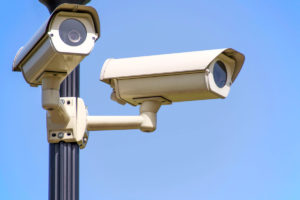 The National Association for Shoplifting Prevention agrees with the retail industry about the effect shoplifting has in all of us. Communities across the country lose the taxes they would otherwise collect from the items being stolen from stores to help social and outreach programs that could benefit those communities in the long run. Shoplifting is a crime that costs the retail industry $45 billion a year, and we as consumers have to pay higher prices to offset the cost shoplifting has in these businesses.
The National Association for Shoplifting Prevention agrees with the retail industry about the effect shoplifting has in all of us. Communities across the country lose the taxes they would otherwise collect from the items being stolen from stores to help social and outreach programs that could benefit those communities in the long run. Shoplifting is a crime that costs the retail industry $45 billion a year, and we as consumers have to pay higher prices to offset the cost shoplifting has in these businesses.
What we, as consumers and retail employees must not forget is that Profiling a customer upon entering a store is not legal, and we must not lose sight of that. Macy’s and CVS stores have had legal suits because of profiling that have cost them millions of dollars. Assuming a poorly dressed person entering your store is a shoplifter, is assuming too much. The NASP states that there is no profile of a typical shoplifter. Men and women shoplift as equally. Poorly or well dressed customers have the capability to shoplift from the store.
A recent article about ways to prevent shoplifting advises to monitor children and poorly dressed people, because they write“Teenagers are the most likely to steal from you. People that are poorly dressed are statistically more likely to be shoplifters as well”. According to The NASP 25% of shoplifters are kids and 75% are adults. Unfortunately they do not post statistics about how well or poorly those people are dressed. If years of research from organizations like The NASP tells you that there is no profile of a typical shoplifter, it is distressing to find articles that tells you to target poorly dressed people with no data to back it up. If kids or teenagers are your main target, then you will be missing out the 75% of adults that actively shoplift.
Preventing shoplifting is not about targeting people of color, how well they dressed, or if they are teenagers or not. People from all walks of life steal, and some of them are repeated offenders with an addiction problem or other types of issues. Preventive measures that allows you to monitor ALL people including employees, is the only smart solution to take for any retail store. Prejudices or preconceived notions of what a typical shoplifter is can be detrimental to stopping shoplifting and employee theft.
Recent research suggest greeting customers as they enter the store is one of the best methods to prevent shoplifting. Employees should also wander the aisles, but that does not mean targeting “poorly dressed” people. A well lit store, or a store that has shelves that are well organized can deter shoplifters from entering the store. Shoplifting is an inevitable part of doing retail business, get to know your store, and offer preventive shoplifting measures without targeting specific people.
 Some shoplifters are violent. I follow these incidents and they seem to be becoming more frequent. The reasons why are many and there is plenty of blame to go around: State and local governments, courts and lax Judges, parents and even retailers themselves. Much of that is out of our control. We must keep violent and non-violent shoplifters from even entering our stores.
Some shoplifters are violent. I follow these incidents and they seem to be becoming more frequent. The reasons why are many and there is plenty of blame to go around: State and local governments, courts and lax Judges, parents and even retailers themselves. Much of that is out of our control. We must keep violent and non-violent shoplifters from even entering our stores.
 I’ve been doing employee theft investigations for years now. Sometimes, they’re a blast. Often, they frustrate me. Not because the person is a thief, but because the loss could be so avoidable if managers would take the time and play offense. Sure, we can run reports and watch video, but all that’s doing is keeping us on the D-Line. You have to play hard and not be afraid to call an audible when needed.
I’ve been doing employee theft investigations for years now. Sometimes, they’re a blast. Often, they frustrate me. Not because the person is a thief, but because the loss could be so avoidable if managers would take the time and play offense. Sure, we can run reports and watch video, but all that’s doing is keeping us on the D-Line. You have to play hard and not be afraid to call an audible when needed. Shoplifting affects everyone. As shoplifting and employee theft seem to be an unstoppable problem for the retail industry, researchers try to find different methods to prevent and combat shoplifting.
Shoplifting affects everyone. As shoplifting and employee theft seem to be an unstoppable problem for the retail industry, researchers try to find different methods to prevent and combat shoplifting.
 Light-When someone is looking to do no good to your property, they feel more secure if it looks like no one is home. The key is to confuse them and make them feel unsure. Remember, most burglars are lazy. If they are not sure about your house, they will move on. So you should have at least two light timers (three is better) set up and running seven days a week. These should be in different areas of the home and should come on and off at different times. Use the random or security feature found on most timers. This will vary the on/off time every day just a little in case someone is watching the house for a pattern.
Light-When someone is looking to do no good to your property, they feel more secure if it looks like no one is home. The key is to confuse them and make them feel unsure. Remember, most burglars are lazy. If they are not sure about your house, they will move on. So you should have at least two light timers (three is better) set up and running seven days a week. These should be in different areas of the home and should come on and off at different times. Use the random or security feature found on most timers. This will vary the on/off time every day just a little in case someone is watching the house for a pattern.  customer transaction.
customer transaction. Have you been keeping up with the news? It appears the stock market is on the verge of breaking new records. People are gaining confidence now that some economists are expressing optimism that we are about to see a jump start in economic growth. Does that mean EVERYONE is going to benefit? Unfortunately, the answer is no. There are many people who will continue to work in their current jobs and experience little personal benefit in their own eyes. What do I mean, “In their own eyes?” Just this, there are some people who are not satisfied with their job, or financial situation, or any number of things in their life and do little or nothing to try to change that. What they WILL do is get jealous when they see others who do well. It may be a co-worker who gets a promotion, a friend who has received a pay raise, a relative who has purchased a new car, there are lots of things that people can get jealous over. Sometimes this jealousy turns into an attitude of “Keeping up with the Jones’s” and can result in someone engaging in dishonest activity so they can have new things too. Frequently those who steal because they haven’t gotten that raise or promotion will try to justify their actions by rationalizing that they deserve it and aren’t being recognized for their contributions.
Have you been keeping up with the news? It appears the stock market is on the verge of breaking new records. People are gaining confidence now that some economists are expressing optimism that we are about to see a jump start in economic growth. Does that mean EVERYONE is going to benefit? Unfortunately, the answer is no. There are many people who will continue to work in their current jobs and experience little personal benefit in their own eyes. What do I mean, “In their own eyes?” Just this, there are some people who are not satisfied with their job, or financial situation, or any number of things in their life and do little or nothing to try to change that. What they WILL do is get jealous when they see others who do well. It may be a co-worker who gets a promotion, a friend who has received a pay raise, a relative who has purchased a new car, there are lots of things that people can get jealous over. Sometimes this jealousy turns into an attitude of “Keeping up with the Jones’s” and can result in someone engaging in dishonest activity so they can have new things too. Frequently those who steal because they haven’t gotten that raise or promotion will try to justify their actions by rationalizing that they deserve it and aren’t being recognized for their contributions. Many stores, public places, and government
Many stores, public places, and government